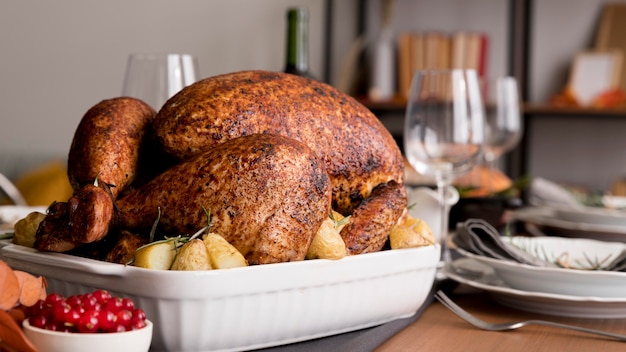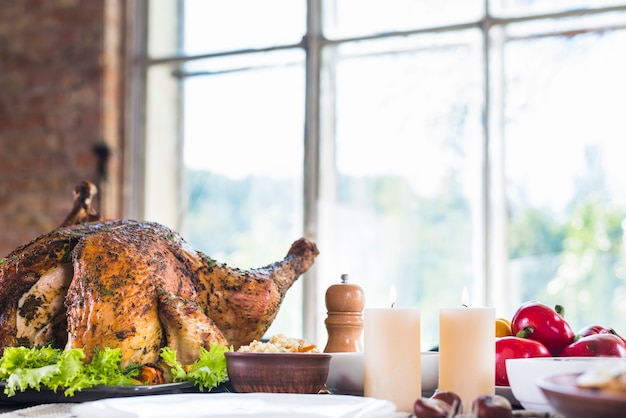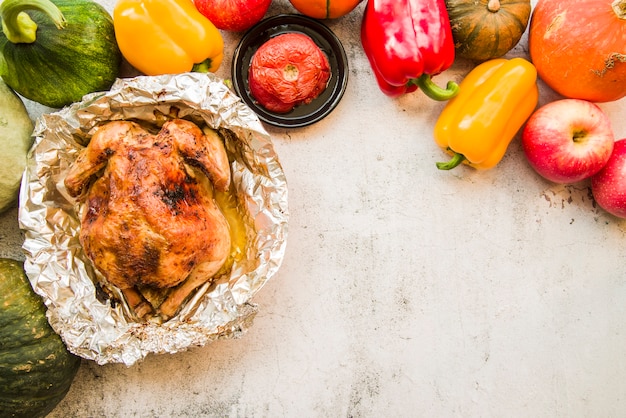The aroma of a perfectly roasted turkey, a symphony of savory smells wafting through the air, is the quintessential hallmark of the festive season. But for many home cooks, the prospect of tackling this culinary behemoth can be daunting. The fear of undercooked poultry, dry meat, or a burnt bird can easily turn a celebratory meal into a kitchen disaster. However, fear not! I'm here to guide you through the intricacies of turkey cooking time, offering a foolproof method that'll leave you with a succulent, juicy centerpiece worthy of all the festive cheer.
Now, I've been roasting turkeys for years, and I've learned a thing or two along the way. While the classic "minutes per pound" rule is a solid starting point, it's not always the end-all-be-all. There are a few factors that can affect the cooking time, and understanding these nuances is key to achieving a perfectly cooked bird.
(Part 1) Understanding the Fundamentals

Let's start with the basics. Turkey cooking time is primarily determined by the weight of the bird. A larger turkey, naturally, will take longer to cook through than a smaller one. So, when we talk about "minutes per pound", we're essentially referencing the time needed to cook the bird to a safe internal temperature. But hold on, there's more to consider than just weight alone.
The Turkey's Size: A Bird's-Eye View
Turkey sizes can vary greatly, from petite birds suitable for a cozy dinner for two to massive specimens that can feed a crowd. Knowing your bird's size is crucial in estimating your cooking time. Here's a quick guide to help you navigate the different categories:
- Petite Turkey (8-12 pounds): These compact turkeys are perfect for smaller gatherings or intimate family meals. They tend to cook a bit quicker than their larger counterparts, making them an excellent choice for a more casual setting.
- Standard Turkey (12-16 pounds): This size is the most common choice for families and gatherings. They offer a good balance of size and cooking time, making them a reliable option for a traditional festive feast.
- Large Turkey (16-20 pounds): These generous birds are ideal for larger families, gatherings, or if you want to have plenty of leftovers. They take a bit longer to cook, so be prepared for a slightly more extended roasting time.
- Extra-Large Turkey (20+ pounds): Now, we're talking serious turkey! These behemoths are a statement piece for a truly grand celebration. Be prepared for a substantial cooking time, as their large size demands extra patience and careful monitoring.
Stuffing: A Flavorful Debate
Now, let's tackle the stuffing dilemma. Whether you choose to stuff your turkey or leave it unstuffed is a decision that can impact cooking time. Stuffing adds a delicious layer of flavor to your turkey, but it also creates an additional element that needs to cook all the way through. If you're stuffing your turkey, be prepared to add an extra 30 minutes to your total cooking time. This ensures that both the turkey and the stuffing reach the safe internal temperatures.
Cooking Method: From Oven to Grill
The method you choose to roast your turkey can also affect the cooking time. The traditional oven is a reliable choice, offering consistent heat distribution and a controlled cooking environment. However, if you're feeling adventurous, you might consider grilling, smoking, or even using a rotisserie. Each method has its own nuances and requires specific attention to temperature and cooking time. Always consult a reliable recipe or guide for specific instructions and timings based on your chosen method.
(Part 2) The Minutes Per Pound Rule: A Helpful Guide

Alright, now let's delve into the heart of the matter: the minutes per pound rule. This is the most common method used to calculate turkey cooking time. The general rule of thumb is to roast your turkey for 15-20 minutes per pound at 325 degrees Fahrenheit (160 degrees Celsius). For example, a 12-pound turkey would require approximately 3 hours of cooking time. Easy enough, right?
Adjusting the Temperature: A Little Heat Can Go a Long Way
Here's a bit of a pro tip: adjusting the oven temperature can influence the cooking time. Increasing the heat to 350 degrees fahrenheit (175 degrees Celsius) can reduce the cooking time by about 15-20%. This can be a great option if you're pressed for time, but remember, a higher temperature can also increase the risk of dry meat. So, keep a close eye on your turkey and monitor it carefully to ensure it doesn't dry out.
Stuffing Factor: Adding Time for Extra Flavor
As we discussed earlier, stuffing adds an additional cooking element. For every pound of turkey, you're stuffing, add 30 minutes to your total cooking time. So, a 12-pound turkey stuffed with 2 pounds of stuffing would need an extra hour of cooking time.
(Part 3) The Art of the Probe: Unveiling the Truth

Okay, so your turkey is happily bubbling away in the oven. But how do you know when it's truly done? This is where a meat thermometer becomes your culinary hero. This trusty tool is the only way to ensure your turkey is cooked to perfection and is safe for consumption.
The Meat Thermometer: A Culinary Must-Have
Insert the meat thermometer into the thickest part of the thigh, avoiding the bone. The internal temperature should reach 165 degrees Fahrenheit (74 degrees Celsius) for a turkey to be considered safely cooked.
The Pop-Up Test: A Risky Approach
Now, some folks swear by the "pop-up" test, where a small metal rod attached to the thermometer pops up when the turkey reaches a specific temperature. However, this method isn't always reliable, and I personally prefer to rely on the accurate readings of a meat thermometer.
Resting is Essential: The Key to Tenderness
Once your turkey reaches the desired internal temperature, don't be tempted to carve it immediately. Let the turkey rest for at least 15-20 minutes before carving. This resting period allows the juices to redistribute throughout the meat, resulting in a more tender and juicy turkey. Cover the bird loosely with foil to keep it warm while it rests.
(Part 4) turkey cooking time chart: A Quick Reference
To make your life even easier, I've put together a handy chart that summarizes the estimated cooking times for different turkey weights, taking into account both stuffed and unstuffed birds. Simply find your turkey's weight in the left column and then locate the corresponding cooking time in the appropriate column. It's a quick and easy way to get a rough estimate of your roasting time. Remember, these are just estimates, and using a meat thermometer is always the most reliable way to ensure your turkey is cooked through.
| Turkey Weight (pounds) | Unstuffed Cooking Time (minutes) | Stuffed Cooking Time (minutes) |
|---|---|---|
| 8 | 120-160 | 150-190 |
| 10 | 150-200 | 180-230 |
| 12 | 180-240 | 210-270 |
| 14 | 210-280 | 240-310 |
| 16 | 240-320 | 270-350 |
| 18 | 270-360 | 300-390 |
| 20 | 300-400 | 330-430 |
(Part 5) Tips for a Triumphant Turkey: Elevate Your Roast
Alright, so you've got your turkey, your trusty meat thermometer, and your estimated cooking time. Now, let's sprinkle in some extra tips and tricks to ensure your turkey is not just cooked, but truly spectacular.
Brining: A Moisture Boost
Brining is a game-changer for a juicy turkey. It's a simple process of soaking the turkey in a salt water solution for a few hours or overnight. The salt draws moisture into the meat, making it more tender and succulent. You can also add herbs and spices to your brine for an added layer of flavor.
The perfect roast: Flavor from the Outside In
Don't be shy! Before you pop your turkey in the oven, give it a good rub with butter, olive oil, and your favorite herbs and spices. This will not only add a delicious crust to the skin, but also infuse the meat with flavors throughout the roasting process.
Basting: Keeping It Moist
Basting is a simple yet effective way to keep your turkey moist and flavorful. Throughout the cooking process, pour the pan juices over the turkey every 30-45 minutes. This keeps the meat moist and helps to prevent it from drying out, resulting in a truly juicy and delicious turkey.
Don't Forget the Sides: A Symphony of Flavors
While your turkey is roasting, don't neglect the sides! Prepare your favorite vegetables, stuffing, and gravy. A well-rounded meal is a celebration of flavors, so don't let the sides be an afterthought.
(Part 6) Navigating Turkey Disasters: A Rescue Guide
Let's face it, even the most seasoned cooks have their kitchen mishaps. But don't worry, even if your turkey isn't perfectly cooked, there are ways to salvage the situation.
Dry Turkey: Restoring Moisture
If your turkey is a bit dry, there are a few things you can do to remedy the situation. First, try adding some pan juices or gravy to the turkey as it rests. The moisture will help to rehydrate the meat. You can also slice the turkey thinly, which can make it appear more tender and moist.
Undercooked Turkey: Back to the Oven
If your turkey hasn't reached the safe internal temperature, it's crucial to put it back in the oven to finish cooking. Don't take any chances with undercooked poultry. Make sure the internal temperature reaches 165 degrees Fahrenheit (74 degrees Celsius) before serving.
Burnt Turkey: Making the Best of It
Oh no! A burnt turkey is a kitchen tragedy, but all hope isn't lost. Scrape off the burnt parts as best as you can, and serve the remaining turkey. You can always disguise the burnt areas with gravy or stuffing.
(Part 7) Leftovers: A Feast of Possibilities
And finally, let's talk leftovers! turkey leftovers are a culinary treasure trove, offering endless possibilities for delicious meals. Get creative and have fun with it!
turkey sandwiches: A Classic Comfort
A classic for a reason! Layer leftover turkey with cranberry sauce, stuffing, and mayonnaise for a satisfying and comforting sandwich.
turkey soup: Warm and Hearty
A great way to use up leftover turkey and vegetables. Combine turkey, broth, vegetables, and your favorite spices for a warm and comforting soup.
turkey pot pie: A Hearty Delight
A delicious and satisfying meal. Layer leftover turkey, vegetables, and gravy in a pie crust for a comforting pot pie.
turkey salad: A Refreshing Treat
Combine leftover turkey with mayonnaise, celery, and onion for a refreshing and tasty salad.
(Part 8) FAQs: Answering Your Questions
You've got questions, I've got answers. Let's tackle some frequently asked questions about turkey cooking.
1. Can I cook a turkey in a slow cooker?
While it's technically possible, cooking a whole turkey in a slow cooker isn't recommended. Slow cookers are typically too small to accommodate a whole turkey, and the bird may not cook evenly. Stick to a traditional oven or grill for a more reliable and evenly cooked turkey.
2. How do I know when my turkey is cooked?
The most reliable method to ensure your turkey is cooked through is by using a meat thermometer. Insert it into the thickest part of the thigh, avoiding the bone, and make sure the internal temperature reaches 165 degrees Fahrenheit (74 degrees Celsius).
3. What happens if my turkey is undercooked?
Undercooked turkey is a food safety hazard. If your turkey hasn't reached the safe internal temperature, it must be returned to the oven to finish cooking. Make sure the internal temperature reaches 165 degrees Fahrenheit (74 degrees Celsius) before carving and serving.
4. Can I freeze leftover turkey?
Yes, you can freeze leftover turkey. Store it in an airtight container or freezer bag for up to 3 months.
5. How do I reheat leftover turkey?
You can reheat leftover turkey in the oven, microwave, or on the stovetop. Just make sure it's heated through before serving.
There you have it! A comprehensive guide to turkey cooking time, from the fundamental principles to expert tips and tricks. Remember, practice makes perfect. With a little patience and a dash of confidence, you'll be crafting delicious roast turkeys that will wow your guests. So, put on your aprons, gather your ingredients, and let's create some unforgettable memories around the dinner table!
Everyone is watching

Corn on the Cob: The Ultimate Guide to Perfectly Cooked Ears
Healthy MealsAh, corn on the cob. Just the name evokes images of sunny days, barbecues, and that sweet, juicy flavour that ...

Perfect Pork Roast Oven Cooking Time: A Guide to Delicious Results
Healthy MealsThere's something truly satisfying about a perfectly roasted pork. The aroma alone is enough to make your mout...

Ham Cooking Time: How Long to Bake, Smoke, or Boil a Delicious Ham
Healthy MealsAh, ham. It's a classic, isn't it? A real crowd-pleaser, especially around holidays. And when done right, it'...

Scallops: The Ultimate Guide to Perfect Cooking
Healthy MealsAh, scallops. Those delicate, sweet, and utterly delicious morsels of the sea. They hold a special place in my...

Spaghetti Squash: The Ultimate Guide to Cooking and Serving
Healthy MealsRemember that time you saw spaghetti squash at the supermarket, looking all bumpy and strange, and thought, "W...
